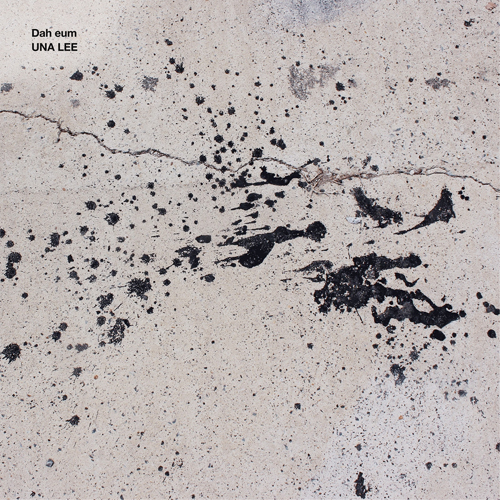Dah Eum. UNA LEE
(Impulsive Habitat 2013)
Review by Caity Kerr
Preface
I’ve been listening to two new releases which have so much in common in their treatment of natural material as musical resources that they deserve to be considered together. I’ll also preface this review by stating that I think it’s important to be able to make decisions about whether a work is successful or not and whether there is, or indeed whether there should be, more than mere taste involved in appreciating new music and sonic art. Gastronomic music seems to be very popular in the current era.
I should say that the benchmark for this kind of work is *KO/USK- by Giancarlo Toniutti with Siegmar Fricke, a book/cd publication (purchase) which goes into the compositional processes behind a work made from the sounds of stones. The book also includes a discussion of specific areas of linguistics. The level of complexity is very high, in fact Toniutti’s work is largely an investigation of complexity across several fields, reflecting the fact that life, in both the human and the other-than-human environment, is in fact very complex. I would assume that the intentions behind *KO/USK- (complexity of preparation, planning, concept, documentation and production) are completely different from those of the two works that I want to review, Dah Eum by Una Lee and Placed by Jeph Jerman and Tony Whitehead. Yet despite the difference in intentions I would argue that the detail in the preparation of *KO/USK- results in a much richer listening experience. This isn’t always the case but the context raises questions about the artists’ approaches and their depth of preparation.
Review
The sleeve notes for Dah Eum give us this information:
Wood and stone were some of the first materials that man used to create architectural structures to protect himself from the rigors of weather, in particular from manifestations of pouring water like rain, snow and hail.
For this release, Impulsive Habitat curator David Vélez invited sound artist and composer Una Lee to acoustically explore the concept of friction and contact working with wood, stone and water as resonating matter. Using the recordings derived from this exploration, Una Lee composed ‘Dah Eum’ (reach/touch on Korean) a work where friction and contact are thrivingly articulated and explored though repetition, rhythm and movement.
One might also usefully mention that (in addition to the human voice) wood and stone, to which we might add bone, would also have been the first materials used to make music, probably even before their use as materials for shelter.
Let me describe what we (I) hear:
Wi [5:32] is rather flat and bland sounding, perhaps intentional, though the agency comes through, as in a highly abstracted field recording plus intervention. There’s a slight resonance which allows prevents the piece from falling into monotony or more precisely monotimbrality.
Teop [4:54] sounds like a stone being rolled around a table (for 4:54!) – here we have a severely restricted approach to materials and resources.
Gyeot [3:17] offers us a ratchety sound with fluttery bits. This piece is more indeterminate and marginally more interesting because of the rhythms within the activations and a flavour of shaped gestures towards the end.
Ann [4:01] is a scrapey piece, with the sound of something being rustled around, gradually becoming watery towards the end.
Mit [4:29] is interesting because of the echo or reverberation in some of the drippy sounds? Hopefully this is a subtlety of the recording environment rather than an added digital effect. The piece continues with more indeterminate scraping and the tiniest dash of squeak.
The pieces on this album straddle the worlds of field recording and free improvisation. One could argue that a possible strength of this is that the mind can be occupied other than sonically in mulling over various concepts external to the sonic content of the work. However there is a possible weakness in the lack of focus – is it timbre or gesture? To which I would add that the interest in the concept often overtakes the sonic interest of the realisation to the detriment of the work.
Another interesting issue raised by this kind of music is the perceived need to describe the sounds in terms of onomatopoeia which is what tends to happen with single sound streams.
[Una Lee; photo courtesy of Impulsive Habitat]



